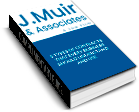 It is difficult to “get sued.” Usually, you can avoid having lawsuits filed against you by providing excellent customer service, quality work product, and handling your employees and vendors reasonably and politely. [1] If one of your customers, vendors, or employees complained to your company’s management or you, you might want to “lawyer up” right away. Why? Because a lawyer can help you save a lot of money by helping you negotiate a settlement and draft a contract to make sure the complaining person sticks to your deal.[2] Let’s say it is to late for all of this, and you got sued. What does the process look like?
It is difficult to “get sued.” Usually, you can avoid having lawsuits filed against you by providing excellent customer service, quality work product, and handling your employees and vendors reasonably and politely. [1] If one of your customers, vendors, or employees complained to your company’s management or you, you might want to “lawyer up” right away. Why? Because a lawyer can help you save a lot of money by helping you negotiate a settlement and draft a contract to make sure the complaining person sticks to your deal.[2] Let’s say it is to late for all of this, and you got sued. What does the process look like?
Phase I – the “Pleadings Phase”
This part of the litigation is where the Plaintiff and Defense are clarifying their allegations against each other. This can take as brief a time as twenty days, but I have seen matters where there are six or seven amendments to the Complaint, as new information appears, so it can last years. This starts when…
-
You receive a Summons and Complaint
The first thing that will happen, most likely, is that a process server or deputy sheriff will find you to provide you with the Clerk of Courts’ summons, and the Plaintiff’s Complaint.[3] These two documents start a clock ticking on your time to respond. The deadline is usually something like twenty days, but the number of days varies based on the jurisdiction’s rules of procedure. If you get served with Summons and Complaint, you probably want to consult an attorney to see what to do next.
-
You file either a Motion to Dismiss or an Answer
Sometimes there is a legal deficiency in the Complaint. If so, you would want to file a Motion to Dismiss. [4] If not, you would want to file an Answer and include any Affirmative Defenses and maybe a Counterclaim if you feel the Plaintiff did something wrong.
-
The Judge hears the Motion to Dismiss
At this point, the Judge will decide whether there is anything legally insufficient in the Plaintiff’s Complaint. The Judge may grant these motions without prejudice, to let the Plaintiff edit, or amend, their Complaint so that it will stand up to legal challenges. Florida case law suggests that Plaintiffs may have three chances to amend, and perhaps more, before they can be dismissed. If the Plaintiff cannot possibly explain its claims, then the Judge may grant the motion with prejudice. That means that the Plaintiff may not re-file an amended complaint and its case is over. Otherwise, the Judge will deny the motion, and the Defendant will have ten-twenty days to file its Answer and accompanying statements.
Phase II – the “Discovery Phase”
This part of the litigation is where the Plaintiff and Defense ask one another for information. Discovery can be in the form of:
-
Interrogatories
Interrogatories are questions that one party asks another party to answer in writing. These are very common in lawsuits.
-
Requests for Admission
These are questions where the party receiving the requests are asked very specific questions and their only answer can be “admit,” “deny” or “without knowledge.” These are used to identify all of the information that both sides can agree on, in order to support a Motion for Summary Judgment. [5]
-
Requests for Production
These are requests for documents. A party writes a list of documents that they want to see, that they might use at trial.
-
Depositions
These are examinations of witnesses in front of a court reporter under oath, that are typed up so that the parties can review them and learn about what the witnesses may say in a trial. These can be very expensive, since the court reporter fee is in the range of $100/hour and the transcripts are $5-7 per page.
During this part of the litigation, you are trying to collect everything that you need to resolve the case. If you learn your case is weak, you might want to have a mediation, which is a meeting with the parties in a lawsuit, their lawyers, and another attorney who tries to help everyone reach an agreed settlement. Even a strong case merits mediation, because you might save a lot of time, risk, and attorney’s fees by resolving the case by agreement. Discovery can last years.
Phase III – Resolution
I call this phase the Resolution phase, because one way or another, you need to reach a conclusion of the litigation. You can resolve a case by:
-
Mediation
A mediation is a type of negotiation where a neutral third-party, (typically a private attorney) meets with the parties involved and their attorneys to learn what their arguments and evidence are to support their side of the case. The mediator then meets with each party independently to discuss their positions and advocate for a settlement. The discussions with the mediator and during settlement discussions are all confidential. If the mediation is successful, you will settle the matter. Otherwise, there will be an impasse and your case will continue to move forward.
-
Summary Judgment
A summary judgment happens when one party files a Motion for Summary Judgment, and says to the Judge that all of the facts that are agreed on by both parties are enough to support a victory for me in this case on the law alone. These can be very difficult to win, because almost every case has questions of fact, meaning that the parties totally disagree on a point of fact that is critical to who is right and who is wrong.
-
Trial
A trial can be either in front of a judge or in front of a jury. They can range from a few hours long, to weeks long. In a trial, the plaintiff presents an opening statement and then the defense presents an opening statement, to explain to the trier of fact, (the decider, namely the judge or jury) the basic outline of what they will try to prove. Then the plaintiff calls its witnesses, who are questioned and then cross examined by the defense. When the plaintiff is done presenting its witnesses and evidence, it will “rest.” At this point, there are motions from either party asking the judge to rule on the evidence so far. Then the defense has its turn to present evidence, and the plaintiff cross examines the defense witnesses. More motions ensue, and then the judge or jury will come to a verdict. The verdict will be confirmed by the judge, and turned into a judgment.
Because litigation takes such a long time and is so expensive, the logical choice may be to write off the claim you may have as a cost of doing business, or settle a claim against you for the same reason. Even so, the logical choice may not be available to you. After all, you might get sued by a wealthy, irrational person who wants to cause you to suffer for no apparent reason. It is possible to avoid these situations, or mitigate them, by having solid contracts with your customers, vendors and employees, so that the legal fees are paid by the losing party in a litigation. At least that way, you may be able to recover your costs at the end.
What can I do to protect myself from being sued?
I’m being sued. Now what?
Other articles:

